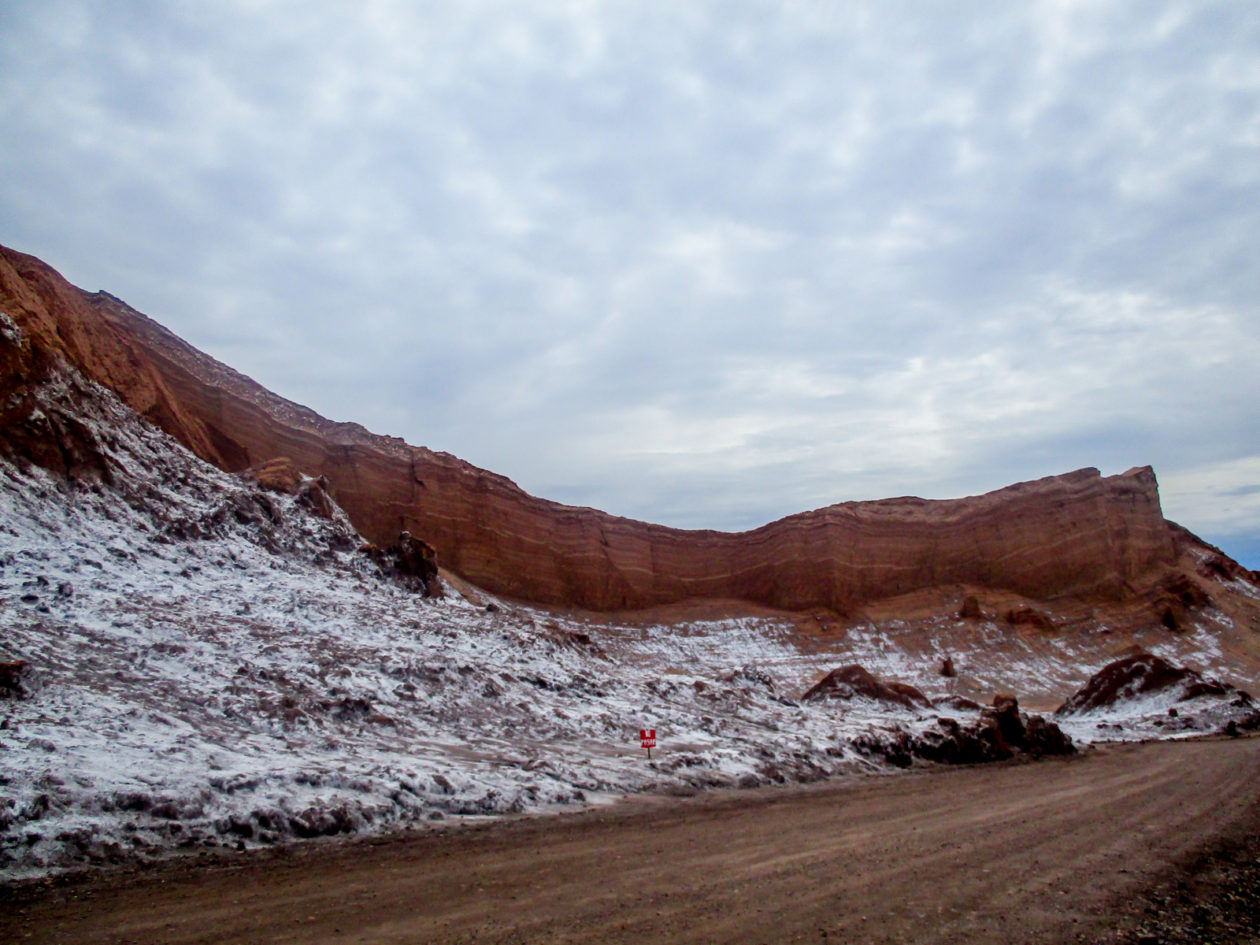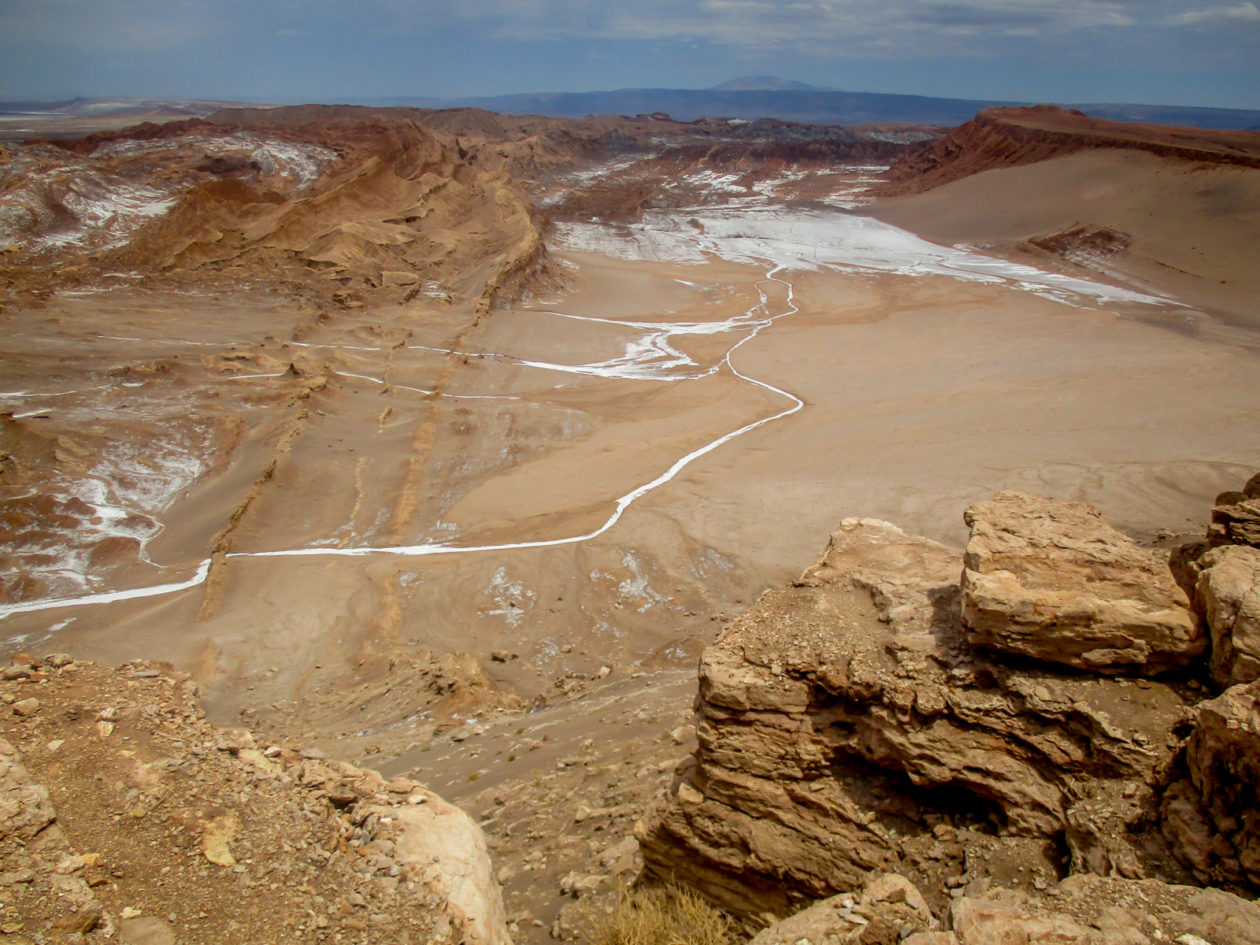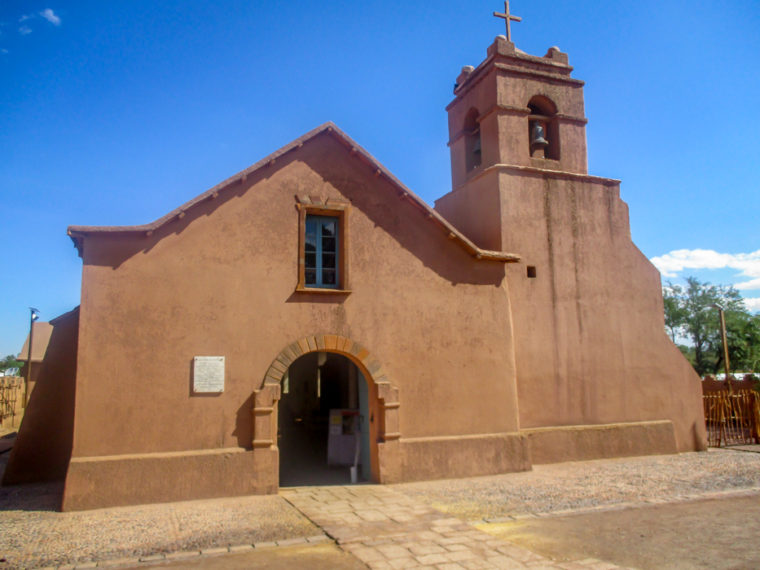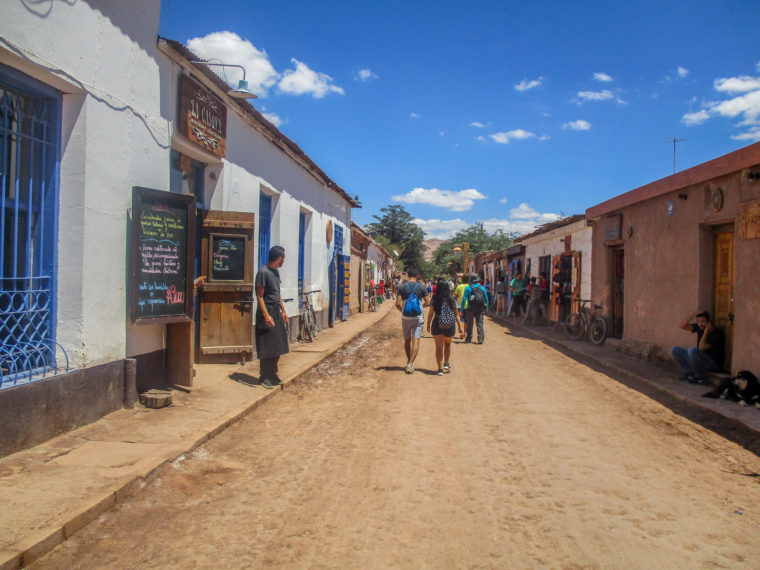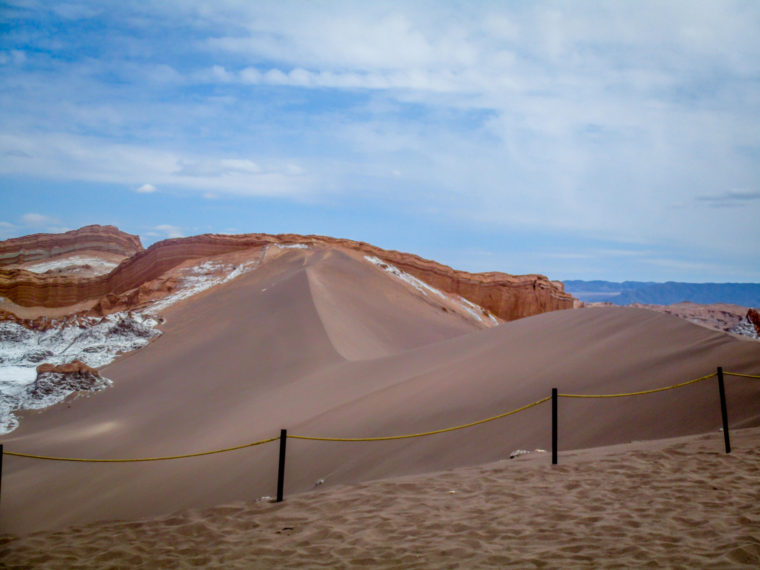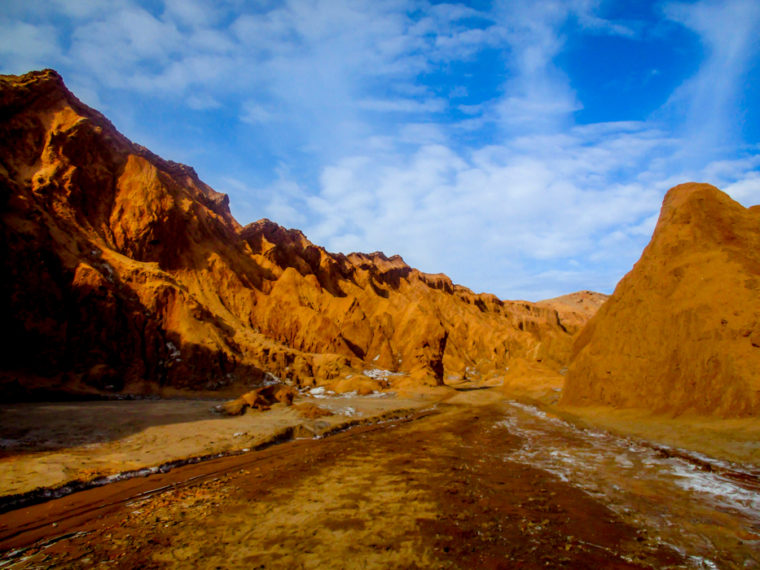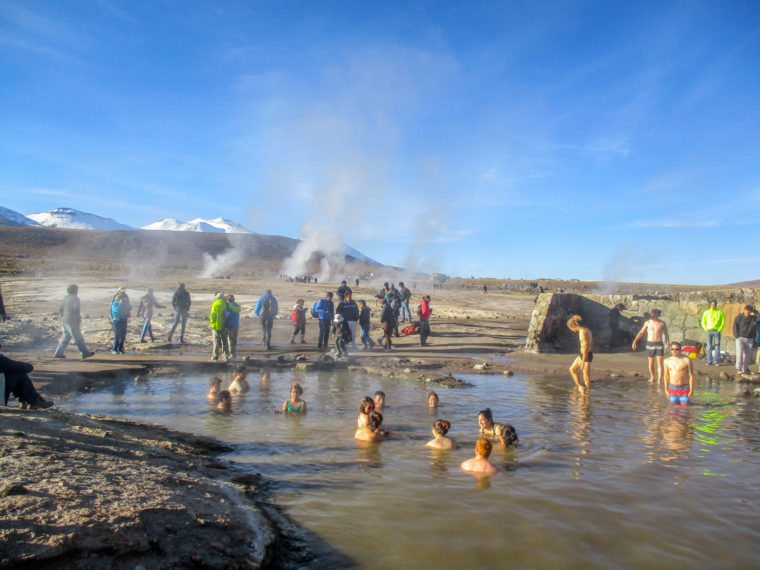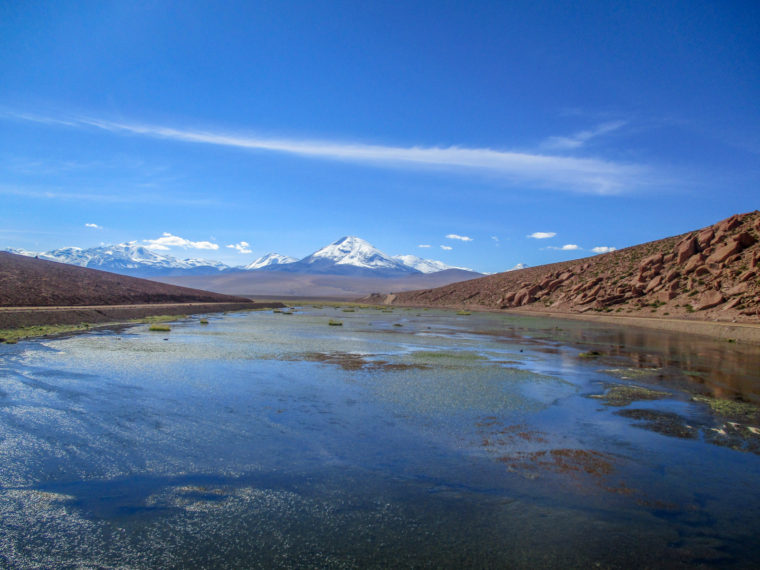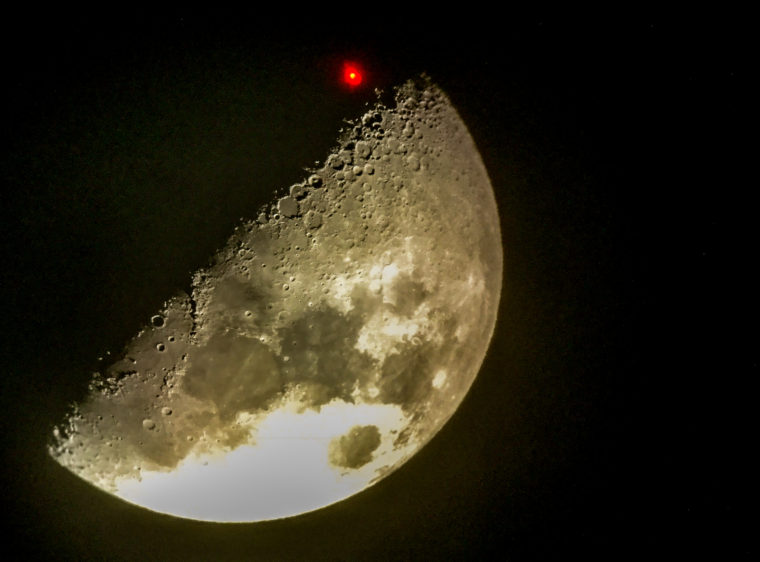San Pedro de Atacama
There was a lot of great things to mention about Salta in addition to the amazing nature. It was for instance possible to get breakfast even before my the very early morning departures. If I were to make a hit list of the many bus terminals that I had frequented on my trip, Salta would get top marks. A really nice and spacious room with chairs and tables as well as the possibility to buy coffee and Medialunas (Argentinian word for a croissant). When it comes to infrastructure, public transport and what it impacts, the rest of Argentina can learn a lot from their northern region. As always, the bus left on time and for the fourth time in a few days I was on the road between Salta and Pumamarca. There was not much to look at this time though as the weather was bad and when we after Pumamarca drove up to 3.700 m altitude through the hairpin turns, I had seen the day before, we were completely sheltered in clouds. I was at the front of the bus’s top floor and I could not see anything. I don’t think it was much better below for the driver, but we got up and fortunately over the clouds so we again had a view out of the windows. It was a fascinating trip, with very different nature all the way to Chile. We passed the salt at Salinas Grande again, drove past an area where people actually live, but most of the time, it was just beautiful and desolate nature. Border control was passed with the usual stop for a couple of hours. First into a queue to check out of Argentina, which for me was the last time on this trip. Into the back of the line next to, to check into Chile. Then back out to pick up the suitcase, which in the meantime had been placed outside the bus, to get it thoroughly checked. Then we could continue the journey between the many volcanoes and more beautiful scenery.
We arrived at San Pedro in the late afternoon, but the bus continued through the desert to the coastal city of Iquique, where the guy next to me in the bus were going on a beach holiday. He still had a 5-6 hour trip in front of him.
San Pedro de Atacama
San Pedro is a 100% tourist town located very close to Valle de la Luna and Valle de la Muerte. The city is at 2.400 m altitude, so no problems with altitude sickness as long as you stay in the city.
There is not much to see in San Pedro itself, but there is a small cozy square where music was played by either a single person or a group of musicians. In the main street Caracoles, there are a range of providers for tourist tours among hotels, hostels and restaurants. There are also a lot of souvenirs and art shops with the now well known selection of their local craft and some mini-markets where you can get fruit and water etc. The houses are small low huts, and the roads are dirt roads. Atacama is a desert, but in February where I was visiting, they do get rain, and like in Salta, it is very heavy rain showers, which of course put their mark on the area and not least their roads. I think the town was charming, but I met others who did not like it at all.
Valle de Luna
The tours to the Moon valley are usually afternoon / evening tours and includes sunset, but due to the afternoon rain, many companies had changed them for morning trips during the period when I was there. I had a very nice tour, where our guide served us brunch. It is very red in Atacama, but as the rain had washed all dust away, it looked like a snowy landscape in the valleys, but with the “snow” being salt. From the viewpoint of Las Tres Marias we had a beautiful view of the moon valley and could, among other things, follow a “white river” through the valley, with salt instead of water.
Geyser El Tatio
Another tour started very early in the morning, to see the geysers before sunrise. The El Tatio Geyser area is located at 4300 m altitude north of San Pedro along the border with Bolivia, and it is the largest geyser area on the southern hemisphere. There is actually cold in the desert without the sun shining, so when the trip started at 05 a.m. it was both dark and quite cold. It was less dark when we were arrived, but we managed to see many geysers explode in steam before the sunrise. After a little breakfast, it was possible to get a swim in the hot springs. On the way back we visited a village where they served grilled lama meat. On this trip I also saw Vikunas. They are a smaller version of a Guanaco and only live up in the height and they actually taste excellent.
Stars in the desert
I had also plotted in a lagoon trip on my program, but the trip got canceled as the road was destroyed by rain andnot repaired yet because of the carnival festivitas the week before. Fortunately, I would have the opportunity to see lagoons and flamingos on my trip to Bolivia. Instead, I went on an evening trip to look at the stars. The Atacama Desert is the best place in the world to study stars, and there is a very big world wide program – ALMA – in the area. I visited a small place a little away from the city, so it was completely dark. There were several star binoculars available and we got a star card so we could recognize the stars we could spot. It was very dark and there were really many stars to look at. We also got the opportunity to get a picture of the moon through a star binocular.
Summary
San Pedro is a fun and very different place to visit. There were a lot of young people in town, so it is definitely a popular place for the backpackers, but there were people of all ages and probably the place where I talked with the vast majority of people. Two minutes after I sat down, I was talking to someone and it happened every day. There was enough to talk about, we were all on a trip either in the same or in opposite direction, so we had many stories and experiences to share.
Link to Atacama Photos
This entry was posted in Chile, Destinations, San Pedro de Atacama, South America
